This travel guide takes you to An Giang, a newly expanded province that brings together the rich Mekong Delta heartland of Long Xuyen, the cultural charm of Chau Doc and the tropical beauty of Phu Quoc. From floating markets and sacred mountains to white sand beaches and coral reefs, this combination has created one of Vietnam’s most diverse travel destinations. Here, you can immerse yourself in riverside life, discover unique cultural traditions and relax in an island paradise – all in one trip.
General information
An Giang, long known as the “rice bowl of the Mekong Delta”, has taken on a whole new look after merging with Long Xuyen, Chau Doc and Phu Quoc. Thanks to the merger, the province now encompasses everything from lush delta landscapes, vibrant riverside cities to spiritual sites and one of Vietnam’s most popular island resorts. It’s a rare combination, where you can watch the sunrise over floating villages on the Hau River in the morning and, in the afternoon, swim in the turquoise waters off a tropical beach.

Map of An Giang after merger
At the heart of the province is Long Xuyen, a vibrant riverside city and commercial hub, known for its bustling floating markets and Mekong lifestyle. To the northwest, Chau Doc is a cultural crossroads near the Cambodian border, famous for its religious sites such as Sam Mountain and its blend of Vietnamese, Khmer and Cham heritage. And then there’s Phu Quoc, or “Pearl Island”, with its white-sand beaches, vibrant coral reefs and fast-growing status as one of Southeast Asia’s top island getaways.
For travelers, this integration means easier connections between diverse landscapes, allowing you to create itineraries that combine cultural exploration, natural beauty and sheer relaxation without ever leaving the province.
Weather and best time to visit
With its recent merger, An Giang now boasts an intriguing mix of climates, with the difference between the mainland and the tropical island climate of Phu Quoc. This means your travel experience can be very different depending on where you go in the province.
In Long Xuyen and Chau Doc, the weather is typical of southern Vietnam, with two main seasons. The dry season lasts from December to April, bringing mild sunny days and low humidity, making it ideal for sightseeing, outdoor activities such as cycling through the rice fields or cruising along the river. The rainy season lasts from May to November, with afternoon showers refreshing the fields and filling the canals. This is also the time of the annual flood season when the rivers rise and the floating markets are at their busiest.
Moving offshore, Phu Quoc has a warm tropical climate all year round but has a distinct dry season from November to April – ideal for water activities, diving and sailing. The rainy season from May to October has heavier, often short showers, and lush green landscapes.
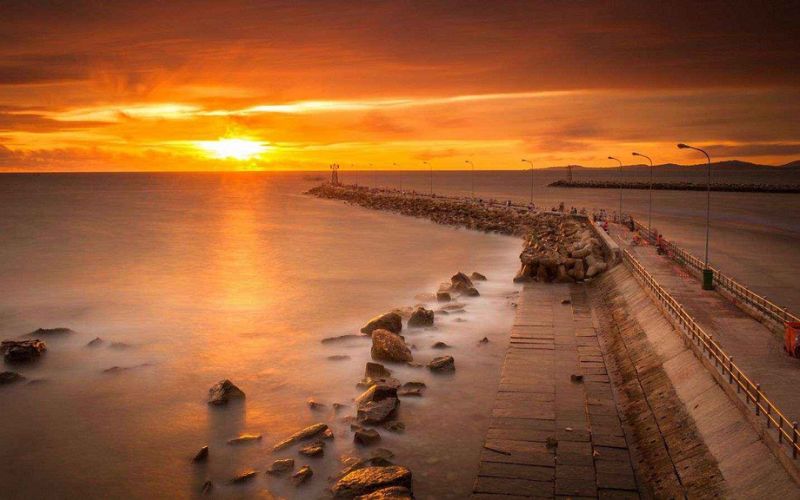
Warm sunset glow over Phu Quoc Island
If you want to combine river and island experiences, the ideal time is from December to March. During these months, you will have the freedom to explore the Mekong Delta and the calm, clear beaches of Phu Quoc. But if you go in April or August of the lunar calendar, visitors will have the opportunity to experience the two biggest festivals: the Ba Chua Xu Festival of Sam Mountain (April 23-27) and the Bull Racing Festival (late August).
How to get there
By Road
An Giang has now become one of the major cities in the Mekong Delta and is connected to many major cities by a dense network of highways. From Ho Chi Minh City, Long Xuyen is about 190 km away, taking about 4–5 hours by National Highway 1A and National Highway 91. Chau Doc is a little further, about 250 km, taking about 6 hours. From Can Tho, Long Xuyen is only a 1.5–2 hour drive, making it easy for visitors to travel to the Mekong Delta. There are many bus companies with various routes throughout the day, but if you want more flexibility and privacy, book a private car with a driver, which is especially suitable for groups.
By Air
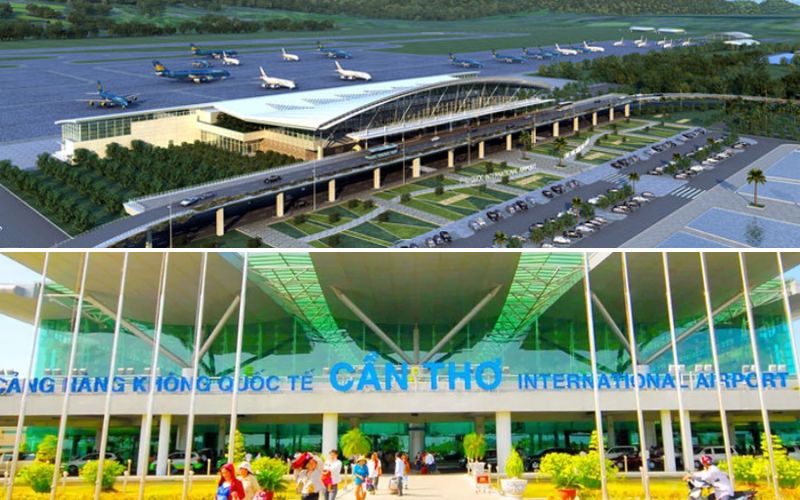
Can Tho & Phu Quoc International Airports, gateways to An Giang
Phu Quoc International Airport is the province’s main air gateway, with direct flights from Ho Chi Minh City, Hanoi, Da Nang and some international destinations such as Bangkok, Singapore and Kuala Lumpur. From Phu Quoc, you can travel to the mainland by ferry and continue by road to Long Xuyen or Chau Doc. Although Long Xuyen and Chau Doc do not have their own airports, the nearest airport on the mainland is Can Tho International Airport, about 110 km from An Giang. From the airport, you can travel by taxi or bus to the city center.
By Water
If you are coming from Cambodia, the speedboat from Phnom Penh to Chau Doc is a popular and scenic option, taking only about 5 hours along the Mekong River. From Phu Quoc, ferries will connect to Ha Tien or Rach Gia, from where you can continue to Long Xuyen or Chau Doc by bus or car. In the province, water transport is a popular form of transport, partly creating a unique charm for visitors who want to learn more about local life.
How to get around
On the mainland (Long Xuyen & Chau Doc)
In Long Xuyen and Chau Doc, the most flexible way to get around is by motorbike. Rental cars are widely available in the city, and the flat roads make driving easy, even for beginners. Taxis and Grabs usually only operate in major towns, so if other destinations are not available, you can take a motorbike taxi, which is only suitable for short trips. For a more local experience, take a ferry across the river or visit floating villages.
But if you are going longer distances, for example, from Long Xuyen to Chau Doc or to neighboring districts, travel by bus or private car, a comfortable option if you want to stop at temples, markets or picturesque rice fields along the way.
On Phu Quoc Island
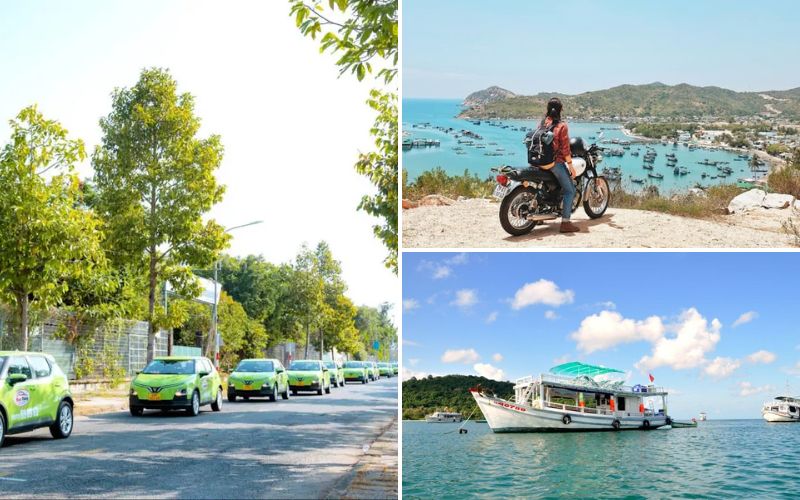
Main transportations when getting around An Giang
When in Phu Quoc, motorbike rental is the top choice. The main roads on the island are good, and having your own car makes it easy to get to hidden beaches and fishing villages, experiencing the laid-back atmosphere. Taxis are plentiful around the island centre and coastal areas, but can be quite expensive due to the island’s location. Some visitors like to take day trips that include transport, especially for diving or island hopping.
Between the mainland and the island
Ferries and speedboats regularly connect Phu Quoc to the mainland at Ha Tien or Rach Gia, where you can continue by road to Long Xuyen or Chau Doc. If you’re short on time, domestic flights between Phu Quoc and Can Tho or Ho Chi Minh City can save you a day of travel, especially if you’re planning to return to other destinations in Vietnam.
Best places to visit
Tra Su Cajuput Forest
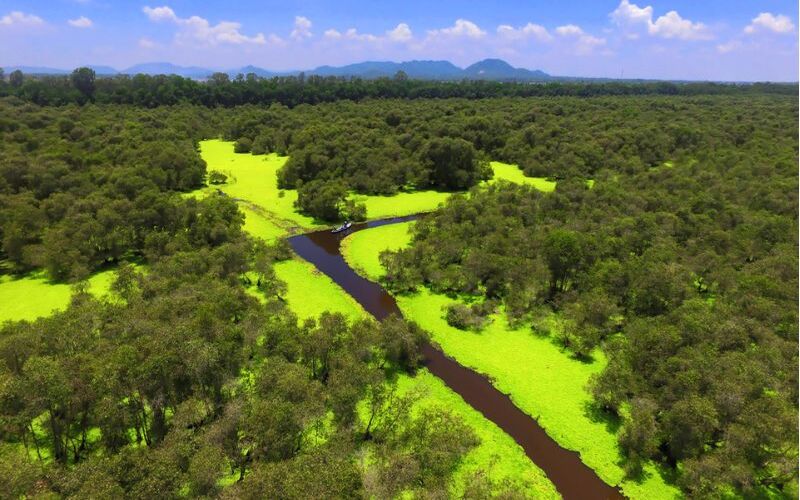
Tra Su Cajuput Forest
This 850-hectare forest is home to nearly 140 species of plants, mainly Cajuput. There are also 70 species of birds, 25 species of reptiles and amphibians, 20 species of fish and 11 species of mammals. The biodiversity present in this nature reserve is exceptional and well preserved. The best way to visit this forest is definitely by boat along the stream through the forest. This stream is also known as the “green road” thanks to the lush water hyacinths. The tranquility of this place is unforgettable, and you will live a magical moment that you will remember forever.
Sam Mountain
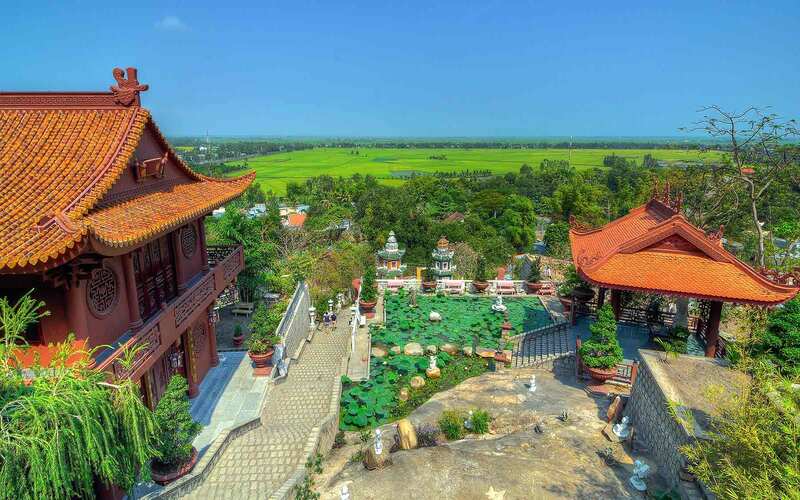
Sam Mountain
This 230-meter-high mountain offers majestic scenery and many historical relics. Sam Mountain is the highest mountain in the Mekong Delta and is considered the main attraction of Chau Doc. Climbing to the top of the mountain is definitely the highlight of a visit to Sam Mountain. It offers spectacular views of the surrounding area. On the top of the mountain is a military outpost, which is still in operation.
Ba Chua Xu Temple
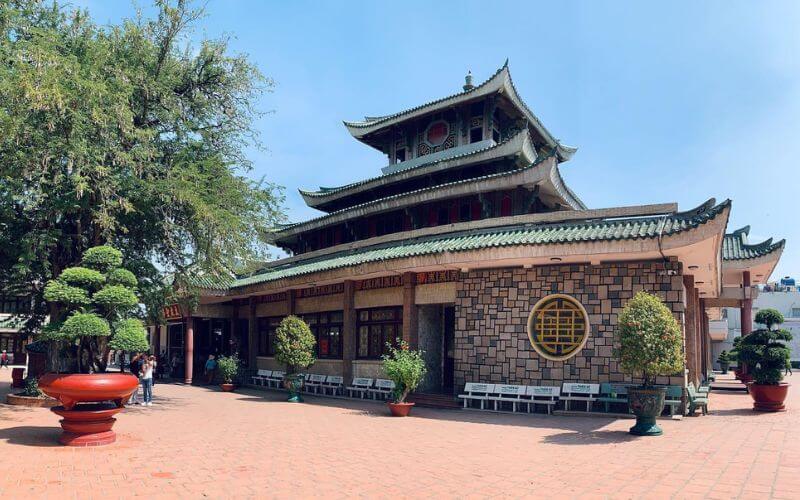
Ba Chua Xu Temple – Chau Doc
Located at the foot of Sam Mountain, Ba Chua Xu Temple resembles a blooming lotus with a three-tiered roof and artistic decorations. Every year, from the 23rd to the 24th of the fourth lunar month, local people hold the Via Ba festival to commemorate and pray for the country’s heroes.
Chau Doc Floating Village
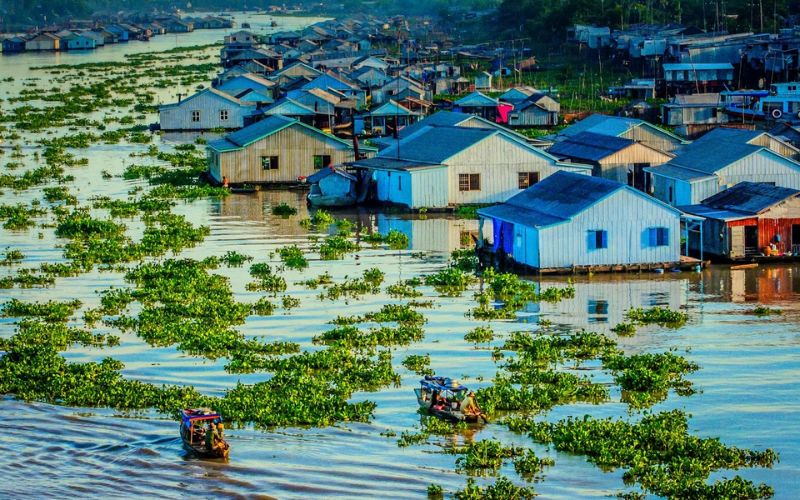
Chau Doc Floating village
The most unique attraction is Chau Doc Floating Village, with its unique river culture. Here, each raft is like a roof connected to each other, stretching along both banks of the river. The lives of families are concentrated on a raft 4 meters long and 7 to 8 meters wide. Canoes and boats are the main means of living for each family in the village.
Tiger Island (Con Son)
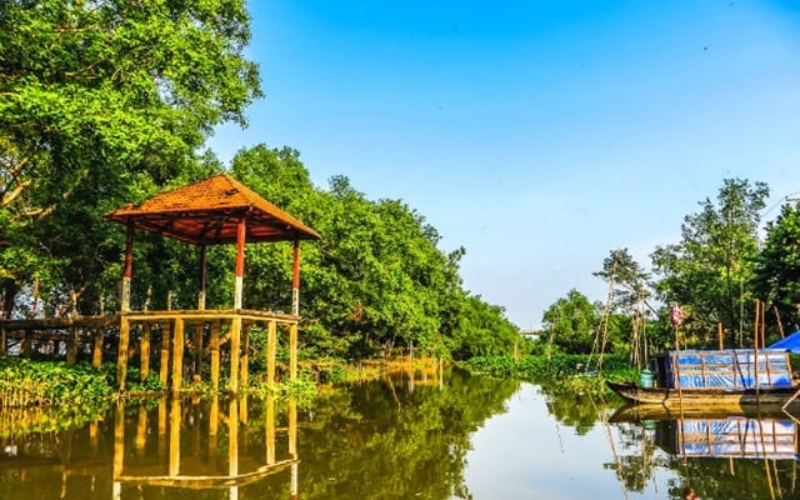
Tiger Island
Just a short ferry ride from Long Xuyen City, Cu Lao Ong Ho Island is a peaceful riverside retreat and the birthplace of Vietnam’s second president, Ton Duc Thang. The island is home to the Ton Duc Thang Memorial, which houses his childhood home and memorabilia. Besides the history, the island is also a great place to take a leisurely bike ride along the tree-lined village streets, meet friendly locals and enjoy fresh tropical fruit from riverside gardens. The laid-back pace of life here makes a great contrast to the hustle and bustle of Long Xuyen City.
Phu Quoc Night Market
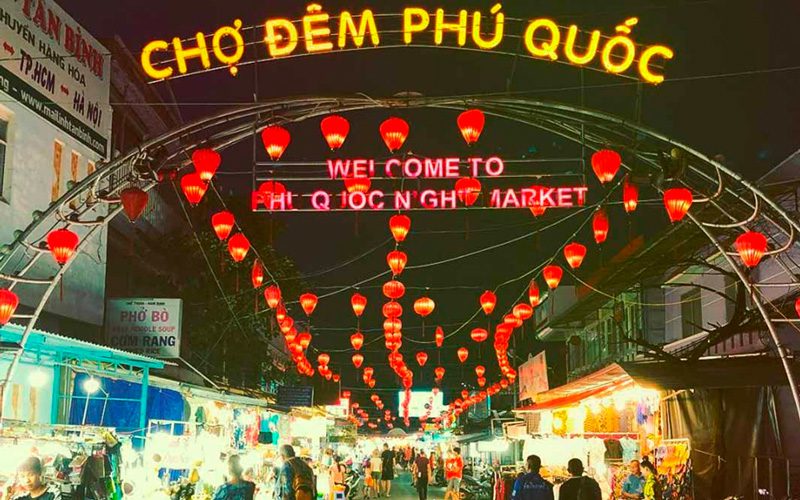
Phu Quoc Night Market
This is the place to be if you want to enjoy delicious seafood and shop for local produce and souvenirs. Every evening, Phu Quoc Night Market is held in Duong Dong Town. The stalls open around 3:00-4:00 pm, but the market only comes alive with a night scene around 8:00 pm. Opening hours may vary depending on the weather and the number of visitors, and can be crowded until 2-3 am the next morning.
Phu Quoc National Park
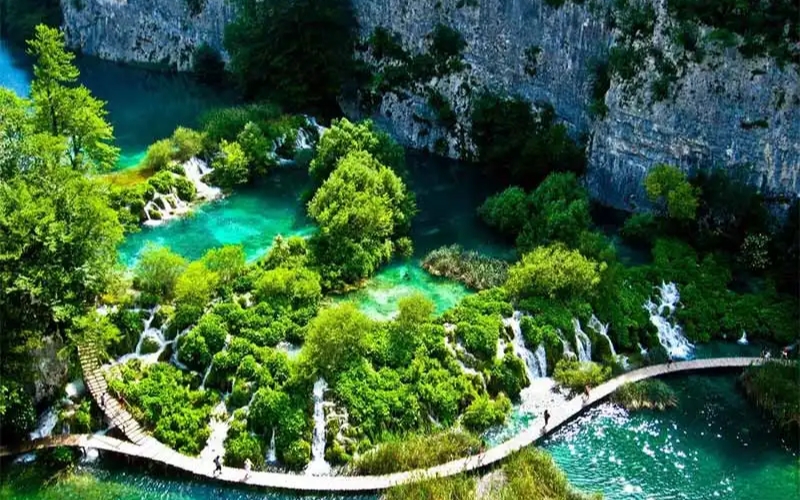
Phu Quoc National Park
Phu Quoc National Park, located in the northeast of the island and on the northern and eastern border with the coast, covers an area of 31,422 hectares, accounting for 70% of Phu Quoc Island, and is considered a valuable asset thanks to its rich natural beauty. You can take a walk under the shade of tall trees in Phu Quoc National Park to avoid the heat, and admire the flora on both sides of the path.
Phu Quoc Prison
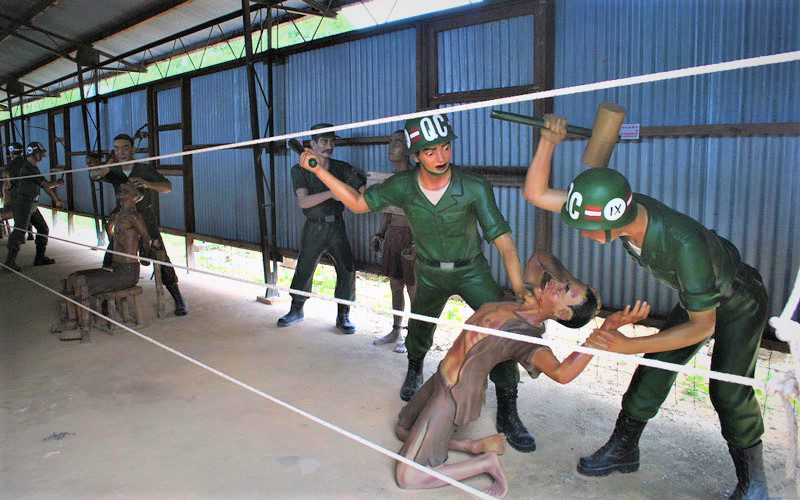
Phu Quoc Prison – popular destinantion in Pearl Island
Don’t miss Phu Quoc Prison if you want to learn more about our colonial period. This prison, also known as “Coconut Prison”, was built by the French colonialists from 1949 to 1950. At that time, the prison held more than 14,000 political prisoners. These prisoners were reunited with their families thanks to the Geneva Accords. However, when the Vietnam War began, the US military rebuilt the site under the same name. Many brutal and inhumane punishments and tortures can be seen at Phu Quoc Prison, famously known as the Tiger Cages, which were once used to detain prisoners, and is a popular tourist attraction here.
Tropical Beaches
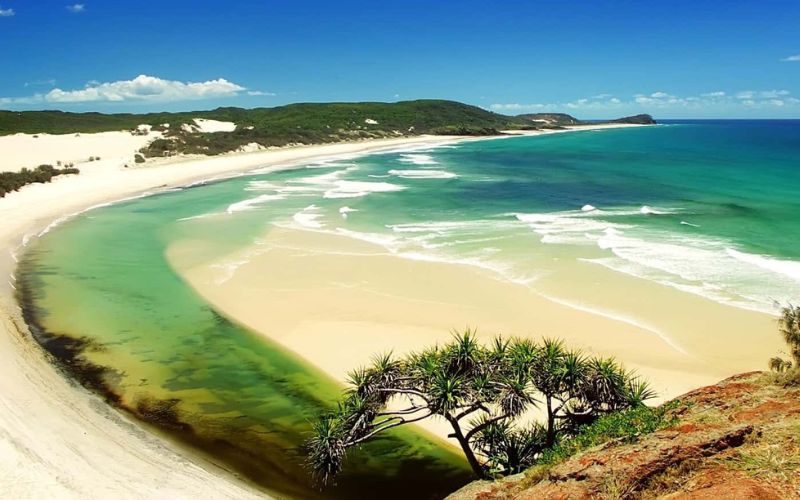
Bai Dai – Phu Quoc
The island is triangular in shape and boasts many white sand beaches. Bai Dai, the largest beach in Phu Quoc, is home to many hotels and resorts. The most famous beach here is Bai Sao, located in the east. Bai Ong Lang, Bai Thom and Bai Dai are also great beaches worth visiting. Most of the beaches on this island are not clearly marked on the map, so don’t hesitate to take a walk and explore the luxurious paradise beaches.
What to eat
Chau Doc Fish Noodles
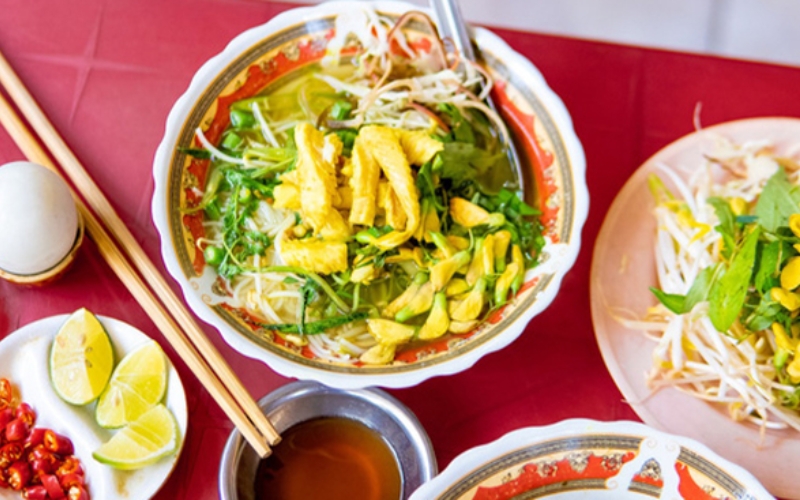
Chau Doc fish noodles
Fish noodles are the most attractive dish in Chau Doc that you should not miss. This dish is extremely delicious and refreshing thanks to the unique recipe of the chefs here. The preparation is quite simple, but the special thing lies in the ingredients that are only available in the Southwest region. The sweetness of fresh snake fat, the aroma of rice noodles and the unique flavor of the wild flowers, all create a bowl of fish noodles that truly captivates diners.
Nị Rice – Pua Ca
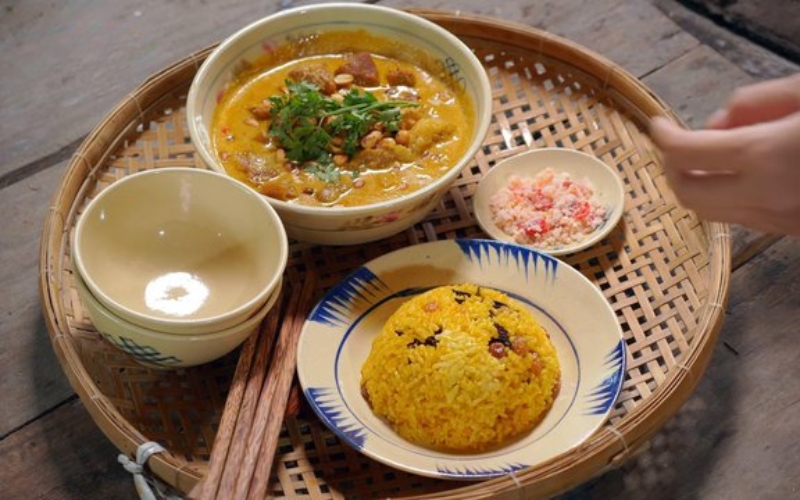
Com ni ca pua
Nị Rice – Pua Ca is a famous traditional dish of Chau Giang Cham village, made from rice cooked with milk, you can add raisins depending on your taste. Pua Ca is made from beef marinated with spices that are very typical of the Southwest region such as wine, ginger, coconut milk, curry, onions, … creating a unique feature for this rustic dish. These two dishes combine harmoniously with each other, with a relatively sophisticated, unique and quite strange recipe for Vietnamese and international tourists.
Banh tam bi
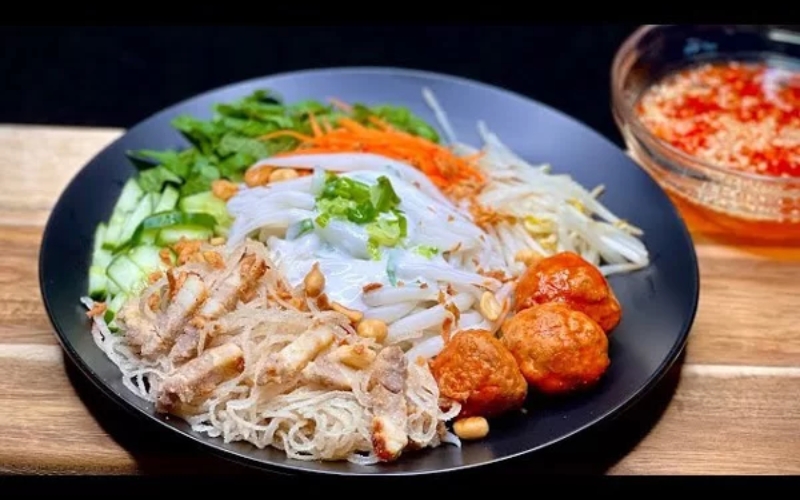
Banh tam bi
This is a thick, soft rice cake, covered with shredded pork skin, fresh herbs, pickles and drizzled with a layer of rich coconut milk. This is a classic breakfast dish in Long Xuyen, with a balance between salty, sweet and aromatic flavors creating an irresistible attraction.
Banh bo thot not
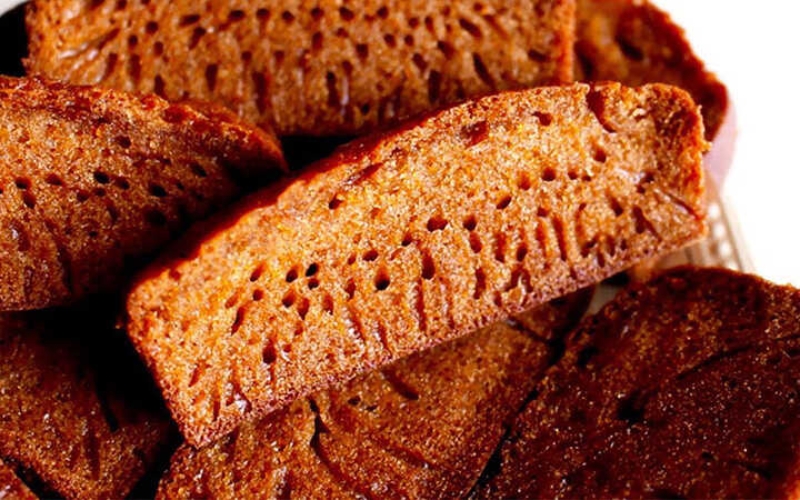
Banh bo thot not
Banh bo thot not is a rustic cake popular in the Southwest region and is also a famous specialty of An Giang. It is made from simple, familiar local ingredients, through the hands of “bakers”, the honest, simple farmers of the Bay Nui region. The sweet taste, mixed with a bit of delicious fatty palm sugar makes diners exclaim in admiration.
Herring Salad
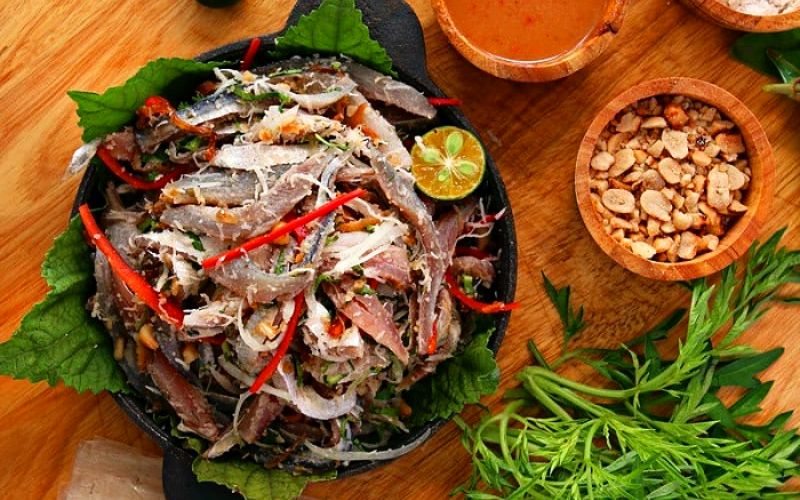
Herring salad
This is a signature fish salad in Phu Quoc. Thinly sliced raw herring mixed with shredded coconut, herbs, onions and peanuts, served with rice paper and dipping sauce. Fresh, crispy and flavorful, this is the perfect dish for a hot day on the island.
Bun Quay
Bun Quay is a must-try specialty when visiting the island. The name comes from the unique dipping sauce, which requires “mixing” all the spices together thoroughly for about 5 minutes. Then pour the hot broth over and enjoy.
Ham Ninh Steamed Crab
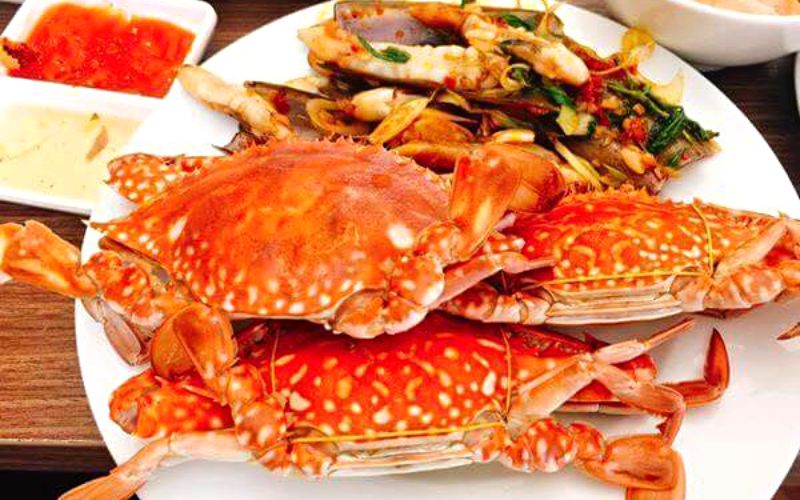
Ham Ninh steamed crab
In the Phu Quoc Food Tour, steamed crab is a popular dish served in Ham Ninh village. Ham Ninh crab meat is soft, chewy and chewy. This dish is even more delicious when cooked and dipped in black pepper sauce, salt and lemon juice.
With Long Xuyen, Chau Doc, and Phu Quoc now under one province, An Giang offers everything from vibrant river towns to golden beaches, all in one trip. Whether you’re dreaming of floating markets, sacred temples, or island sunsets, this is the place to make it happen. Ready to explore? Contact us today and let’s start planning your unforgettable An Giang adventure.